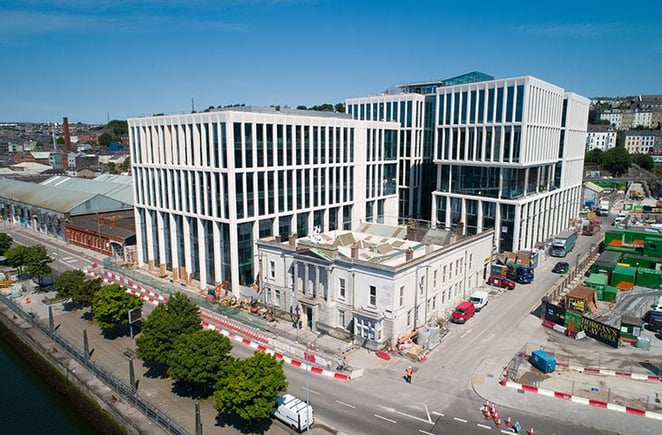LEED, an acronym for Leadership in Energy and Environmental Design, is a voluntary evaluation system created by the U.S. Green Building Council (USGBC) in 1998. It assesses and certifies the environmental sustainability of new and planned buildings, including their surroundings.
As a globally recognized system, LEED continually adapts, reflecting advancements in greener, more energy-efficient building practices and a deeper understanding of the environmental and social impacts of construction projects.
The latest iteration, LEED v4, emphasizes reducing energy consumption both during and after a project's completion. It also evaluates how buildings and homes can positively impact local communities and contribute to global environmental health.

LEED certification meaning
The LEED plaque you see on some buildings signifies their LEED certification. This certification is granted by the Green Business Certification Inc. (GBCI) to buildings that meet or exceed specific environmental standards. A range of buildings, including commercial spaces, schools, shopping malls, and homes, can achieve LEED certification.
LEED-certified buildings are primarily recognized for their energy-efficient design. However, GBCI uses a comprehensive, goal-driven credit system, allowing buildings to gain certification by meeting various sustainability goals.
For instance, a LEED-certified building might earn points for minimizing water usage, using responsibly sourced materials, or being located near public transport to decrease car dependency. LEED certification also promotes projects that are in harmony with their environment, preserving local wildlife and biodiversity.
The LEED scoring system not only focuses on the comfort of a building's occupants but also pushes designers and architects to address specific environmental risks. A recent update in the LEED criteria includes credits for using bird-safe glass in high-rises to prevent bird fatalities.
Sustainability factors such as energy, water, light, waste, materials, location, and environmental impact are all considered in a building's LEED score, reflecting its overall sustainability and design quality.
LEED certification levels
LEED certification is categorized into four distinct levels, determined by a point system ranging from 40 to a maximum of 110 points. The total points a building accrues decide its level of sustainability certification.
The LEED certification tiers are as follows:
- Certified: Buildings scoring 40–49 points.
- Silver Certification: Buildings accumulating 50–59 points.
- Gold Certification: Buildings achieving 60–79 points.
- Platinum Certification: Buildings earning 80 or more points.

LEED point system
The LEED certification process begins with meeting specific prerequisite conditions tailored to the building type in its planning stage. These baseline requirements are essential for all buildings to comply with before they can start the certification process.
After fulfilling these prerequisites, the building's designer can select which credits to pursue and the desired LEED certification level. The USGBC's online LEED credit library presents hundreds of possible credits across nine impact categories.
The categories for LEED credits are:
- Integrative Process
- Location and Transportation
- Sustainable Sites
- Water Efficiency
- Energy and Atmosphere
- Materials and Resources
- Indoor Environmental Quality
- Innovation
- Regional Priority
These credits translate into points, and the value of each credit varies. For instance, in the Location and Transportation category, a building can earn points for features like bicycle facilities close to the main entrance (one point), electric vehicle charging stations in a minimum of 5% of parking spaces (one point), and proximity to public transit, which can yield up to six points based on service frequency.
Why get LEED certified?
Beyond the evident advantages of creating sustainable buildings that reduce the impact on the natural world, LEED certification is often viewed as a mark of prestige for organizations.
Displaying a LEED plaque signifies more than just the construction of an energy-efficient and environmentally friendly building. It reflects a company's comprehensive commitment to environmental, social, and governance issues. As sustainability grows in importance for employees, investors, and employers alike, being recognized as environmentally conscious offers companies a competitive edge in attracting new talent, enhancing brand recognition, and securing investments.





.png?width=661&height=359&name=Video%20img-01%20copy%201%20(1).png)
.svg)